Search Posts
Recent Posts
- The Long Goodbye January 18, 2024
- Once More Around the Mulberry Bush January 9, 2024
- The Wash December 28, 2023
- The Truth About Carver Dogs December 1, 2021
- The Question of Pain November 9, 2021
Categories
Subscribe!
Thanks for subscribing! Please check your email for further instructions.
My Road to Perdition
Admittedly, I love Bulldogs, but how did I get that way? Looking back, I can figure it out because it certainly wasn’t predictable. I was a seven-year-old boy who kept rabbits, and I was horrified when my father decided that it was time to butcher some of them. It was the Depression, after all, and we needed all the food we could get. But I was an all-around animal lover. I always have been, and I still am, but I may not be quite as maudlin as I was then. What pointed such a gentle fellow toward our breed and its many uses?
One vector may have been my father’s stories about his boyhood dog, Jack. Jack was a Collie, and he was a fiercesome fighter, and there were many stories told about him by my father and grandfather. We couldn’t afford for me to have a dog during the depression, but I was a reader, and I began reading the Albert Payson Terhune books that were nearly all about Collies which had the same skills and intellect as Jack. I can still enjoy one of those stories now, but they are quite maudlin—and it was a classic example of an overselling of a breed. But, naturally, my first dog was a Collie when I finally got one.
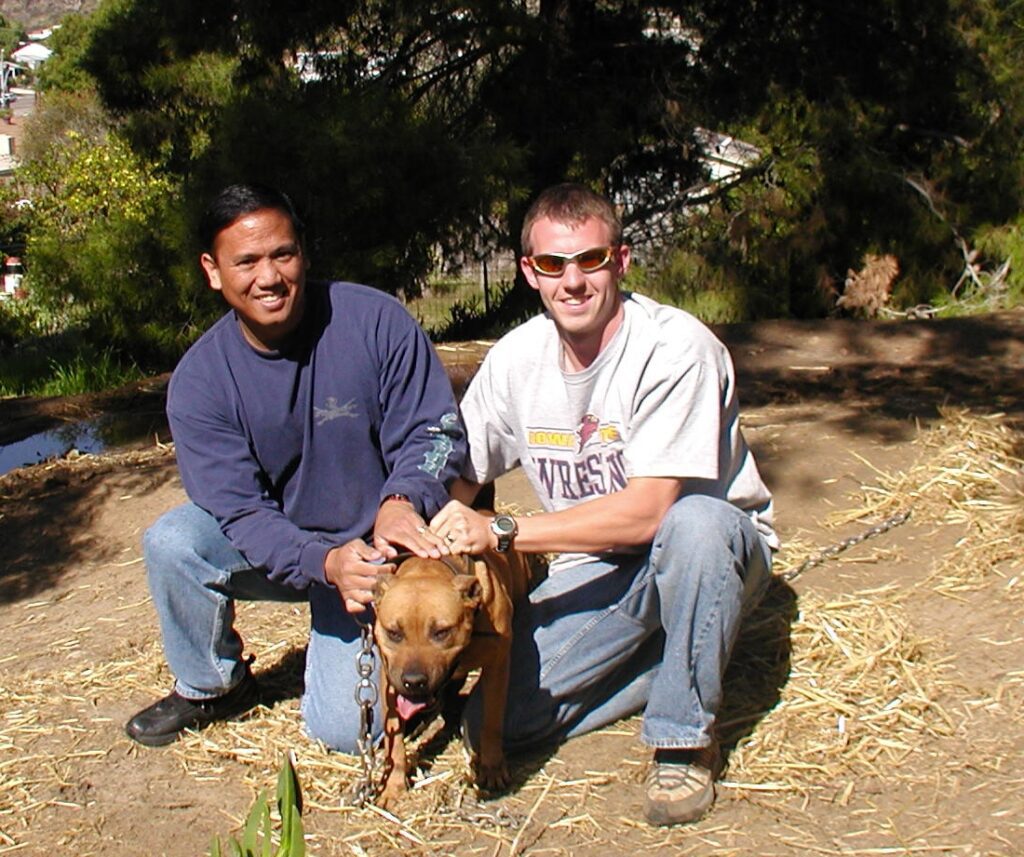
I’ve already told the story of how my dog was picked on by a bully German Shepherd in an article that I called “Tough as Nails,†but I’ll give a quick summary here. My father at the time was in the Border Patrol, back in the days when that was really a respected part of government, almost equivalent to the Canadian Mounties. And the chief of the Border Patrol was a former sheriff, a very colorful figure, with many exploits, much like Wyatt Earp. He kept game chickens and pit dogs. He lent me a small dog, a little brindle Bulldog named Nails. When Bosco finally jumped Nails, I thought at first that he would be swallowed whole, but he ended up giving Bosco such a thrashing that it changed his behavior. He was no longer a bully.
Naturally, that got me to thinking about changing breeds, but I wasn’t quite ready to do it. It took a little more time, and I won’t go into all of that now, but after many twists and turns it eventually got me to the good old American Pit Bull Terrier.
I became such an enthusiast of the breed that I eventually owned several just in my teens. I’ll write about a couple of them in the future because they had connections to famous dogs. I had contemplated several other breeds before, and I had haunted dog shows. My experience with these dogs settled me down to one breed for life.
In those days, the breed was but little known, and most of the people that kept them did something with them. Some used them as catch dogs or for hunting. But most were interested in the fighting aspect. There were very few actual matches, but most people at least rolled their dogs to get an idea of what they had. I was only eighteen when the Korean War broke out, and I, longing to be a war hero, was quick to join the military with a couple of friends.
I ended up eventually in Fort Campbell, Kentucky, in the 11th Airborne (now inactive). In those days, though, if you knew a dog man in one area, he could recommend you to like-minded men in other areas. I had already been to Phoenix for several days in a layover from my trip from Fort Ord to Fort Campbell. I already knew I. D. Cole, and it was through him that I got to meet Ed Ritcheson, Howard Heinzl, and S. W. Hubbard. Ed owned a barber shop, Howard was a vet assistant at a racetrack, and Hubbard owned a fancy night club. Howard had a pit where everyone met to roll dogs on the weekends. I had a grand time during my week there, as I had never seen so many dogs in one city before, and I just couldn’t get enough of the dogs.
I never got to go to Korea, even though I was gung ho to do so, but I got sent to every school imaginable that led to many experiences, and I learned how to fly airplanes (and disarm bombs). In addition, I got to attend several pit dog conventions that were held in various locations, and they often had enough matches that it took an entire weekend to do them all. I got to know a lot of dog men, and I learned a lot more about the dogs.
My time in the service garnered me the G.I. Bill for college, and I put that to good use, too. I got married while attending the university, but I had two dogs at the time! Because of my situation, I had to farm them out occasionally. The two I had were two Wallace dogs, Timbo and Rhoda, and I never got to send for them, as we were staying in an apartment for many years. George Royce ended up with Rhoda, and a real fine fellow named Dawson kept Timbo, and both these dogs can be found way back in some pedigrees.
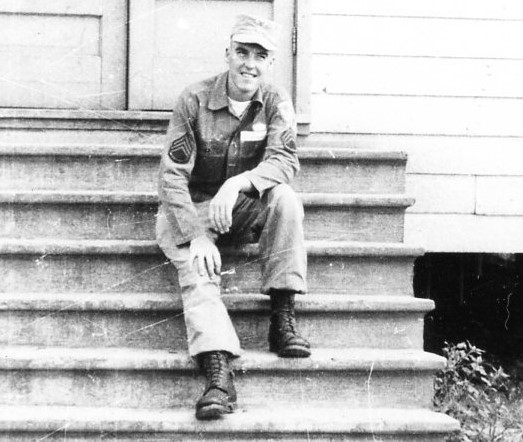
When I got a job in La Mesa, California, we moved to the San Diego area, and I got a pup from Bob Wallace that was named “Sam,†and he grew up into an impressive OFRN dog. Sadly, he was never bred. After I became an administrator in the schools, my passion for the dogs went on hiatus for a while. It’s funny because people always asked about the breed of Sam, and they had never heard of it when I told them. My father-in-law always raved about how good Sam was with my three young sons, as he thrived on the abuse they gave him, climbing all over the dog. Some of my friends in Denver had died, and I only maintained contact with Bob Wallace, as we had become good friends during my time in the military.
We actually had a dog that wasn’t a Bulldog after Sam’s demise. I didn’t think it mattered to me. My passion for the breed was in remission. Then, it happened. There was a cop in the neighborhood who had picked up a grown big dog that was putatively a cross between a Weimaraner and a Great Dane. He took pride in having a big, mean dog. He liked the idea of having a guard dog. I was mildly annoyed by the attitude, but I didn’t think of the dog as a danger. My oldest son was friends with his son, and he was invited over to go swimming at their place. I drove him there, dropped off Mark, greeted the people, and I started my car. I was almost underway when my son came running out of the house with big holes in his arm and shoulder! They were bleeding profusely, so I rushed him to the hospital.
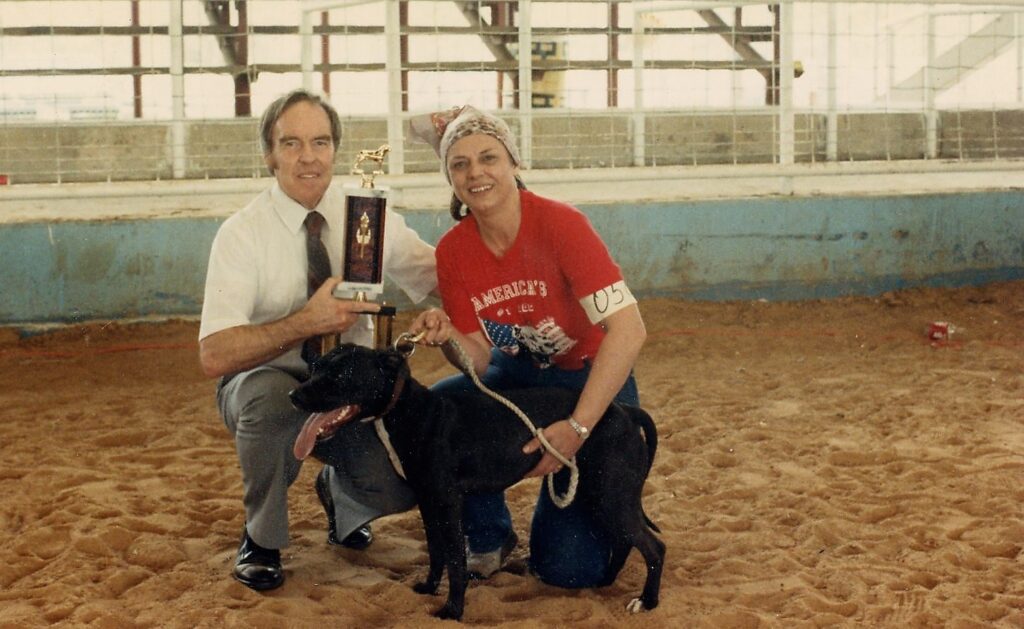
Even though he knew the dog, it had attacked him fiercely upon his entry into the house. I was considerably disgruntled, but I was more so when the people showed up at the emergency room. I thought they were there out of concern for my son—but no, they were there because their own dog had turned around and attacked their son, too! I thought the guy had learned his lesson about big, mean dogs—but he hadn’t! He kept the dog. I was considerably annoyed, and it got me to thinking about getting a Bulldog and dropping it into his yard, so that the guy could find out what a cur he had, as he still took pride in that dangerous animal. That got me to thinking once more about Bulldogs and all that they had meant to me before.
I started making local contacts (referred by Bob Wallace), and I soon had a dog of my own, but it was too late to have an incidental contact between my little Bulldog and his big cur. It turns out that the cop was something of a cur himself, as he had left for parts unknown, deserting his wife and son. I’m obviously a bad judge of character, as I had liked the guy—even if I did want to teach him a lesson.
When I got back into the dogs, it was with all the passion of before. I met everyone, and I learned about the breeding of all the dogs, and I had to update myself, as I’d skipped nearly a decade of experience being privy to all the news of the dogs. When I was down South, that seemed to be the hotbed of activity, and I had gotten to know all the dog men there. But I presently discovered that California had its share of dogs, too, so I had much to learn. Since I was a certified pilot, I could cover ground quickly when I was invited to various locales. I had maintained my correspondence with Bob Wallace in Arkansas, even when I was in my dormant phase with the dogs. He had no children, and he and his wife considered me the son they never had. They were quite concerned when news came from Fort Campbell that twenty-five people were killed when an armed mortal shell was dropped.
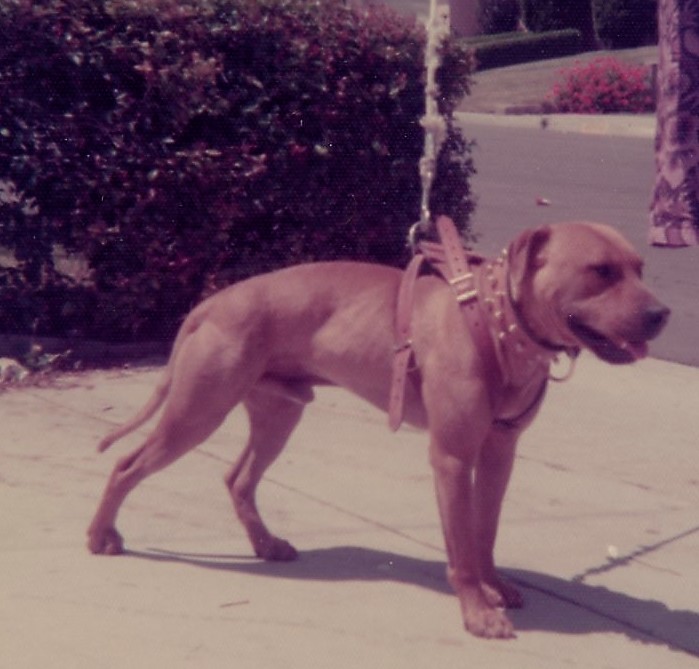
Bob had been mainly a breeder, and he only matched his dogs to test the quality of his strain. I intended to follow the same model in the sense that I was mainly interested in breeding, specifically to keep the Wallace line going. That was going to be difficult because Bob had undergone some serious surgery that he couldn’t be sure of surviving. Because of that, he had a vet come out and put down all his dogs. That had to be difficult for him—and for me, too, but it happened during my hiatus from the dogs. Now that I was interested in keeping his line going, he had only two males that were pure. But he sent me one of the males, Wallace’s Bad Red, and a brindle female, named Star. Star was mainly Wallace breeding, but he had sent a bitch up to a friend in New England, and he had bred her to a Colby dog, and that produced Star. Despite the paucity of brood stock, I began my breeding career, and I was able to get a daughter of Wallace’s Talking Boy from Bert Sorrells. Talking Boy had won best in show, and Bert won some matches with him, too.
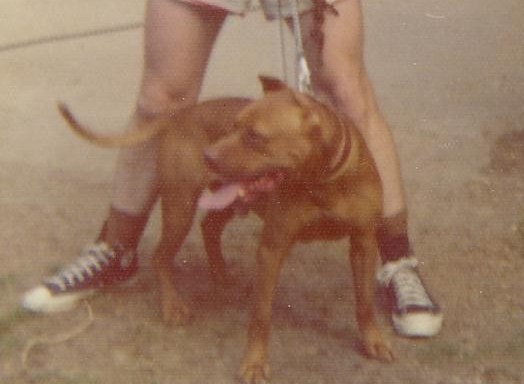
Bad Red had never been matched, but he was down from some solid game dogs, all of them traced back to Bob’s great old dogs: King Cotton, Toney, and the immortal Searcy Jeff. Bad Red proved he was dead game in a horrendous kennel accident that happened while both my wife and I were at work. I had given a son of Red to my neighbor, who had taken a great interest in the dogs. The son was much larger than Red, and he was younger. Besides, Red had a damaged heart from a heartworm infestation. Red was found dead at the feet of his own son. My wife was the one who arrived home to the tragedy. She had to get the neighbor to use a breaking stick to get Red’s body loose. I buried him that afternoon in my own back yard. That was fifty years ago, but I still remember his grave, unmarked though it may be. It was a great loss. Red had proven that he was dead game, as were his progenitors, but I could no longer breed him.
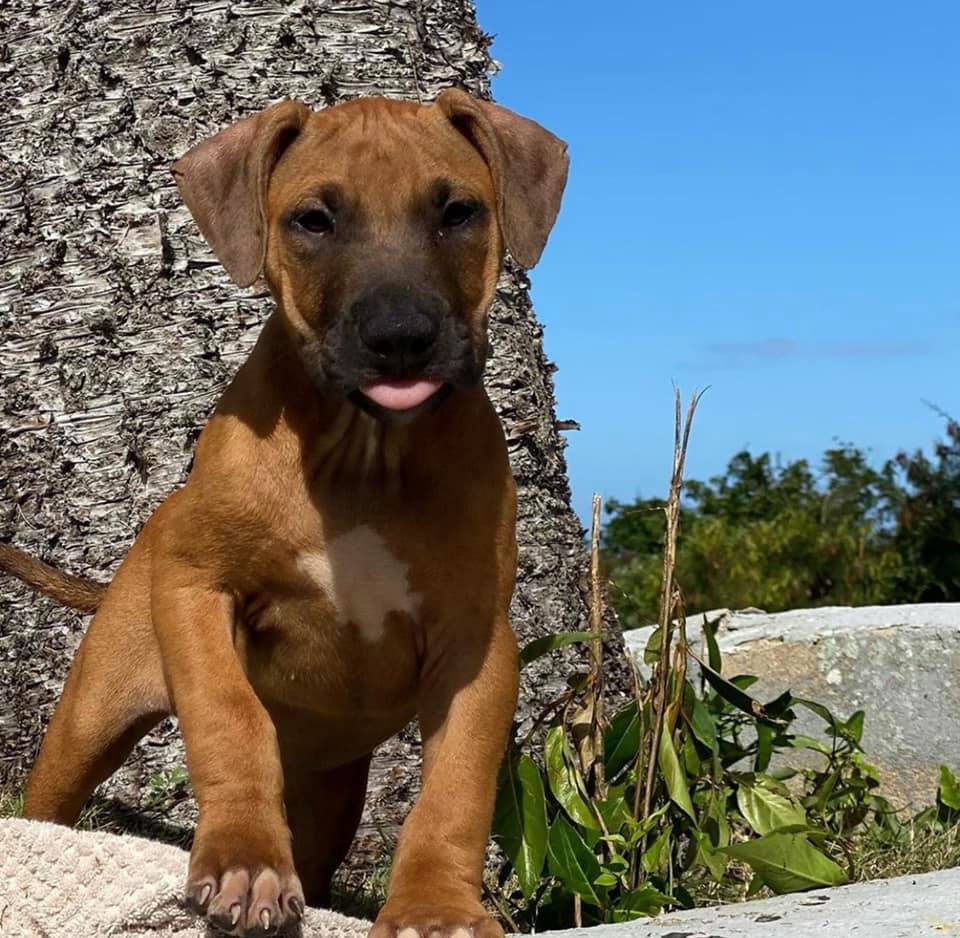
He had been bred only three times: once to Belle, a wonderful female that Bert had given me, but no Wallace blood in her, second to Talking Girl, a daughter of Talking Boy, and that produced a number of good dogs, including Honeybear. The third breeding was to Jim Marshall’s Lady bitch. Even though she was a winner, I didn’t ask for any pups, as I was interested in keeping the Wallace line as pure as possible. But with the death of Red, my task was now impossible because the idea was to keep breeding back to him. Nevertheless, the breeding bug had been planted in me. And I was back in full-blown Bulldog mode!
There was such a paucity of literature on the dogs that I began thinking of a book. After trying to get other, more qualified people to write it, I began one myself. I didn’t feel completely unqualified, as after all, I had been a dog enthusiast my entire life, and I had read countless books, as well as consorted with a variety of various breed enthusiasts. As a teenager, I had met and corresponded with Bert Clouse when he was a young man. I was also a natural scholar, as I went through various books and histories. I had befriended a retired Colonel who was an authority on Bull Terriers, and he allowed me to use his vast library, which contained all sorts of rare 18th century books. After all that reading and study, I felt I could write a decent book.
As a dog enthusiast, I had read many breed books, and most of them were boring—even though I was quite interested in whatever breed I was reading about. I wanted to make my book about our incredibly special breed interesting and classy. So, I included quotations, as well as stories about the breed. These were all stories that had been told to me by dog men, most of them old timers who never lived to see them in a book. I did a lot of research, too, as I wanted this to be a very classy book that was worthy of a noble breed.
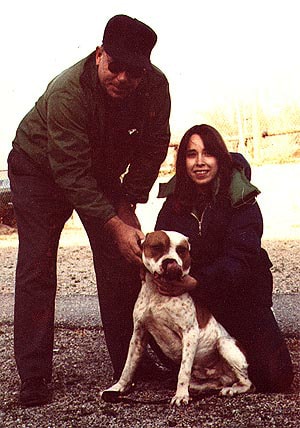
I learned that you get a book editor who works with you when you submit a manuscript, and he really complained about the quality of the pictures. They were used to books about show dogs, and those were usually taken by a professional photographer. And the dogs were trained to pose. In any case, it took about a year for the book to come out, and I didn’t pick the title. It was part of a series of “This is†books, so it was called This is the American Pit Bull Terrier.
I well recall that the owner of the publishing house had been advised against publishing the book because there would be no audience for it! These were show dog people, of course, and they argued that the only people that would want the book would be dog fighters, and it was common knowledge that they didn’t read!
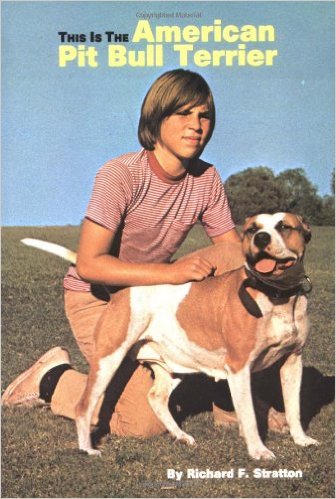
As it turned out, the book did so well that they asked that I write more. I wrote three more books, and I’m not ashamed of them, but if I had it to do over, I would leave out the pictures of the dogs in holds. That’s because the public doesn’t know what they’re seeing when they view them. For example, you can have an ear dog that is simply holding out a dog striving to get a hold, and they think the dog is crying out from the pain of the ear hold! In any case, I’ve decided that having action pictures of dogs is counterproductive . . .belatedly. I deliberately left out fighting photos of my last published book, The Truth about the American Pit Bull Terrier—and the book editors found one of two Tosas! My books had outsold all their other dog books, and they didn’t want to break the formula, or so I suppose.
I never matched a dog in my life. It’s just not my thing—and that’s despite the fact that I find pit dogs nothing short of fascinating. I’ve never lost my conviction that they are noble animals. In addition, I’ve enjoyed the camaraderie of every Bulldog person from breeders to action people to show people to trainers, a very special breed that like to train the dogs for various obedience and agility competitions. I’ve enjoyed the dogs and the people. If this is perdition, I’ll take it quite willingly.